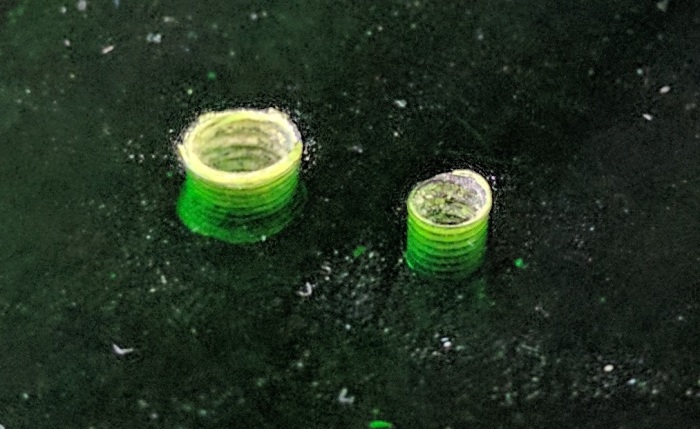Part of the design for PEM1 (portable external monitor version 1.0) was a VESA-standard 100 x 100mm pattern to be tapped with M5 thread. This way I can mount it on an existing monitor stand and avoid having to design a stand for it.
I had hand tapped many M5 threads in 3D printed plastic for the Luggable PC project, so I anticipated little difficulty here. I was surprised when I pulled the manual tapping tool away from one of the four mounting holes and realized I had destroyed the thread. Out of four holes in the mounting pattern, two were usable, one was marginal, one was unusable.

A little debugging pointed to laser-cutting too small of a hole for the tapping tool. But still the fact remains tapping threads in plastic is time-consuming and error-prone. I think it is a good time to pause the project and learn: What can we do instead?
One answer was literally sitting right in front of me: the carcass of the laptop I had disassembled to extract the LCD panel. Dell laptop cases are made from plastic, and the case screws (mostly M2.5) fasten into small metal threaded inserts that were heat-set into the plastic.
Different plastics have different behavior, so I thought I should experiment with heat-set inserts in acrylic before buying them in quantity. It doesn’t have to be M5 – just something to get a feel of the behavior of the mechanism. Where can I get my hands on some inserts? The answer is again in the laptop carcass: well, there’s some right here!
Attempting to extract an insert by brute force instead served as an unplanned demonstration of the mechanical strength of a properly installed heat-set insert. That little thing put up quite a fight against departing from its assigned post.
But if heat helped soften the insert for installation, perhaps heat can help soften the plastic for extraction. And indeed, heat did. A soldering iron helped made it far easier to salvage the inserts from the laptop chassis for experimentation.